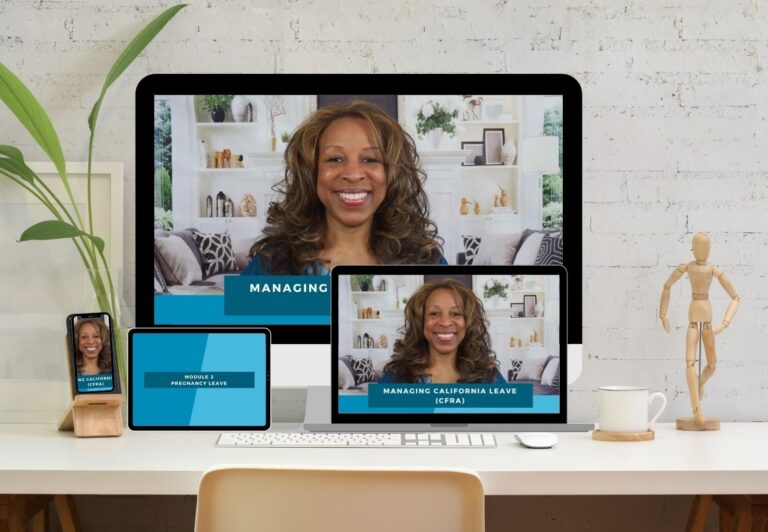What Should Be In My 2022 Handbook

By VICKY BROWN
Well, it’s that time again – it’s the beginning of the year, which means it’s time to review your Employee Handbook. I know – what joy.
OK, well maybe not unabashed joy – but today I am going to help you put a list together of the things you need to keep in mind as you look to updating your handbook.
There are really three main categories to cover: changes in employment laws; changes in your organization and how you want to run things; and of course the elephant in the room – dealing with health and safety issues.
So, let’s start with changes in employment laws. It’s important that you look for updates at the federal and state levels.
A good example of this is supplemental sick leave for COVID and related reasons. In 2021 the federal government mandated up to 80 hours of paid sick time for COVID and related issues – that supplemental sick leave expired on Sept 30 2021. At the same time California also had a Supplemental Sick Leave requirement that also expired in Sept of 2021. However, just within the past 2 days, the CA governor has put a new supplemental leave law in place – this one is retroactive to January 1st, and expires on September 30th of 2022.
But in many areas, you even have to be aware of changes that happen at the more local level, like county or city updates. For instance, in Los Angeles we have to keep an eye on what California is doing – but both the county of LA and the city of LA have their own guidelines as well. And many times, they don’t quite align with what the state has going. For instance, the city of LA has it’s own sick leave ordinance as well.
“…Because (COVID) guidelines shift as recommendations are updated; and because many of these will be (hopefully) temporary in nature, it’s a good idea to add it as an addendum to the formal handbook.”
So, we have to be on top of all three jurisdictions. And, even if you don’t have local concerns, it’s still a bit of a job to stay on top of state changes. For instance both Connecticut and Oregon have expanded their family leave laws. Illinois has a new law that victims of violent crimes (or family members of victims) receive paid or unpaid leave. California has a law around warehouse production quotas. If you have a warehouse, you aren’t allowed to have a production quota that prevents mandated meal or rest breaks, time to use the bathroom or compliance with health and safety laws – things like putting on safety equipment.
Next up – take a look at your company. Are there areas you would like to revise your policy, maybe provide more vacation time, or implement a parental leave policy, or – and this is a big one for most companies right now – formalize your remote or hybrid work policy.
Listen, when this merry go round first started, we were all just responding as fast as we could to the changing landscape. Everyone has to go home, there are lay offs, everyone has to come back, but not right now because numbers are up again, so back home you go. Oh wait, we’ll make your job remote, or we’ll create a hybrid scenario.
Really, we’ve all just been pivoting on a dime. Now is a great time to stop, take stock, and really think about what you want your organization to look like and how you want it to run.
If you’ve moved to a remote or hybrid model, let’ memorialize that in a formal policy. Are all jobs eligible for remote work? If so, is that full time remote work or hybrid remote work. Now maybe some jobs can be full time remote, and others can be hybrid and yet others have to be onsite. Which is which, and why.
I’ll tell you, if you think the question will never come up, you are absolutely wrong. So get your ducks in a row now, before you have to answer someone on the subject. Look at the jobs, their responsibilities, and what is best for your business. Then build the off site eligibility into your job descriptions.
What about this – is there a performance component? Meaning, if someone’s work begins to fall off, or they are loosing productivity, does that impact their ability to work remotely? What about new hires, are they eligible to work off site from day one, or is there an on site training period?

So, one of your employees just told you that she’s pregnant. Feeling overwhelmed, with no idea where to start? After all, HR just got dumped on your plate. It’s not your zone of genius, and you don’t want it to be.
Managing California Leave is your answer. It’s an easy to understand course, that explains what the various leave programs are – without the HR gobbledy gook. And it gives you a clear step by step guide that walks you through the process of putting someone on leave
Yep, you get all the forms, notices and documents too. Everything you need to do it right and do it fast. After all, you don’t have all day – you have other things to do!
Use the link to get an Insider’s sneak peek And don’t worry – you’ve got this. And we’ve got you.
Now, I realize most of these questions really apply to a hybrid model more than a fully remote model – but either way, you should at least think through the answers. And then – get it all written down in policy form.
Now last, but certainly not least – safety management. Again, these days we are mostly focused on COVID, but thing beyond the current situation. How can you give yourself the flexibility to respond to a health crisis.
Well, first off you may be required to have a written safety plan – in California it’s called an Injury and Illness Prevention Plan. It lays out your guidelines on dealing with emergency and/or safety situations. In addition to that, many areas require that you also have a COVID Prevention Plan – outlining how you will handle COVID in your workplace.
But, there are additional things to think about – what about vaccination, masks or testing policies. And don’t forget the option of requesting a medical or religious accommodation.
Because the guidelines shift as recommendations are updated; and because many of these will be (hopefully) temporary in nature, it’s a good idea to add it as an addendum to the formal handbook. That way you can update it, or swap it out whenever you need to.
Now, one word of caution – even though it’s an addendum, you should still have everyone sign an acknowledgment whenever it’s updated. I suggest using an online system and eSignatures to make this process easier on everyone.
OK – I’ll admit, it’s a bit of a job – updating your handbook. But it really is important that you get it right. And yes, I know no one will read it cover to cover – but it is a valuable reference for you team. And I think your attorney will be happy to know that you have communicated your policies to everyone (with their acknowledgement).
So, get an assist from your HR pro or employment attorney, and get that shiny new handbook out there!
Spread the word
MORE HUMAN, MORE RESOURCES
310.308.7680 option 1
hello@idomeneoinc.com

